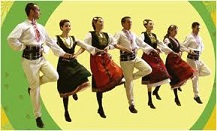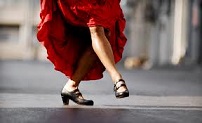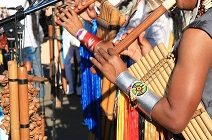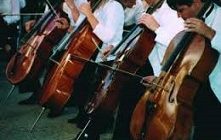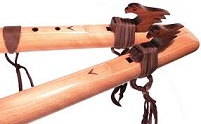Are you interested in learning about how Bulgarian folk dance and music work together? Do you want to learn about the regional influences on the folk traditions? Read our guide for more facts and information…
Folk Dance
Bulgarian folk dances are easily identifiable even if you are not familiar with the intricacies of the form as the dances are almost always performed in a line with elaborate costumes. The dancers link themselves in the line by either joining their hands low and at their sides or crossed in front of their bodies. The feet are critical in Bulgarian folk dancing as the feet move in intricate patterns that are either very fast or much more slowly and deliberate. The dances also involve complex choreography and a great deal of practice is required to perfect the routine as not only are the steps complex but jumps and twists are also integrated into the routine.
Regional Differences
The dancing of the country varies slightly from region to region with each locality being influenced by other neighbouring countries. For example in the northern areas the dance is influenced by Romanian style and around Sofia there is a Serbian influence. The dancing is constantly evolving as it has for centuries but it most commonly evolved in time with the music as there are a variety of rhythms such as combinations of 2/16 and 3/16 notes.
Just as the dancing of the region is influenced by nearby countries so too is Bulgarian folk music. The different regions in Bulgaria have unique music trends but it is not only the locality that alters the music as holidays also influence the music that is popular at any given time. The music of Bulgaria just like the dancing features complex rhythms and when documented in western music script the rhythm is commonly lost as it is unique from typical western rhythm; this is because the rhythms of the music are asymmetrical. It is also of note that the instrumental sounds are paired with singing to complete the folk tradition.
Musical Instruments
Bulgarian musical instruments are often handcrafted by the people involved in the musical field. The most common instruments are made out of local products such as goat skin, wood, and some metal when necessary; as a result of most of the materials being accessible many people throughout the countryside are able to access or make instruments enabling their participation.
Instruments in folk music include the pieces locally known as the gaida, kaval, gadulka, tupan, tambura, and the tarabuka. In order to gain a better understanding of the use of these instruments it can be beneficial to compare them to western instruments, for example the gaida is very similar to the bagpipes popularized in Scotland although the Bulgarian version is constructed out of goat skin. The kaval and the tambura are both similar to the western flute as they are an end blown flute and a long necked metal lute respectively. Bulgarian folk music also includes a string component as the gadulka is a variation on other traditional string pieces such as the viola, the guitar or the violin. A deep beat is also kept in the music which is important for the complex rhythms as the tupan is a large frame drum and the tarabuka is an hourglass shaped finger drum. It is important to note that folk songs or dance are not complete with simply one instrument or one dancer as it is the combination of the elements that creates the art.

